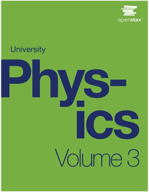?Electron SpinExplain how a hydrogen atom in the ground state (I = 0) can interact
Chapter 8, Problem 7(choose chapter or problem)
Electron Spin
Explain how a hydrogen atom in the ground state (I = 0) can interact magnetically with an external magnetic field.
Unfortunately, we don't have that question answered yet. But you can get it answered in just 5 hours by Logging in or Becoming a subscriber.
Becoming a subscriber
Or look for another answer
